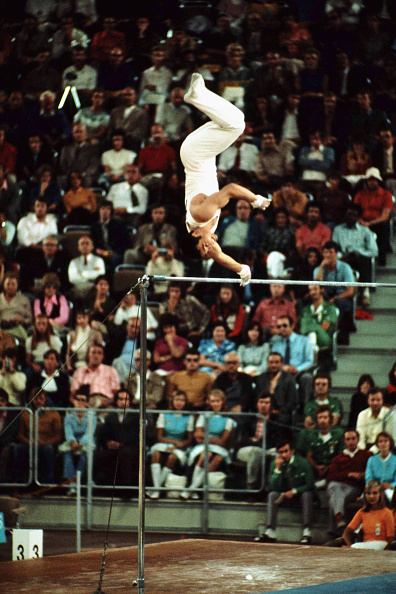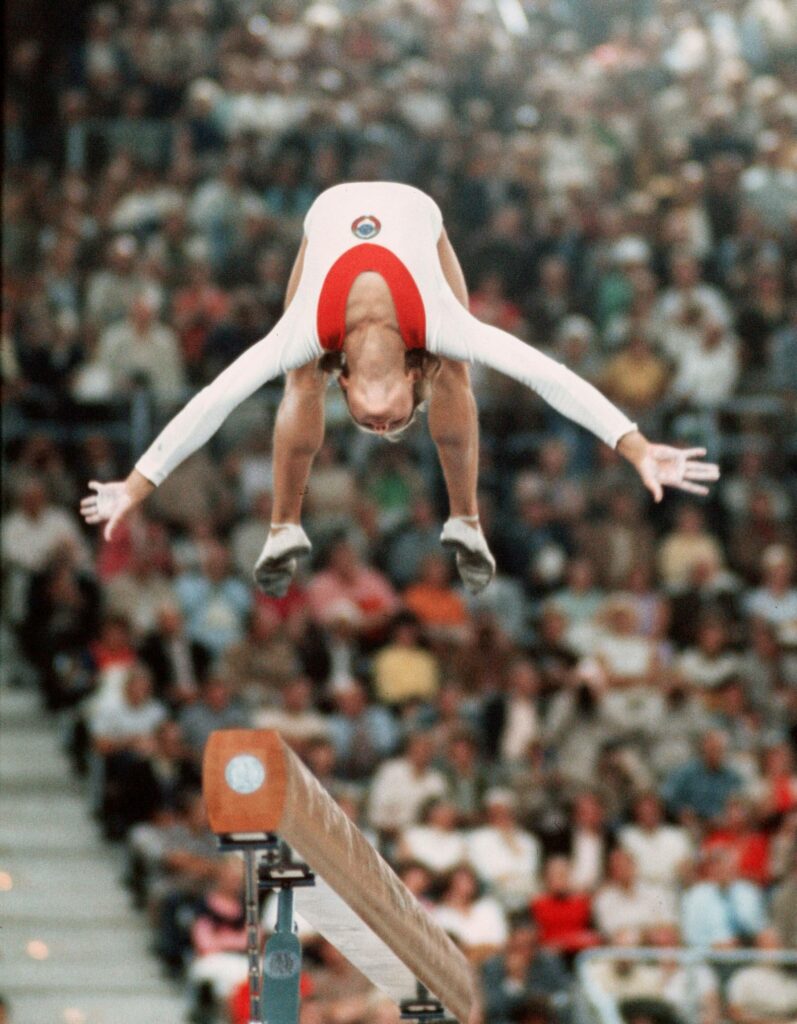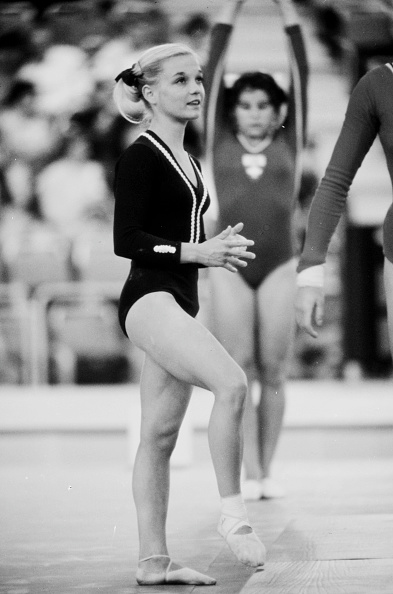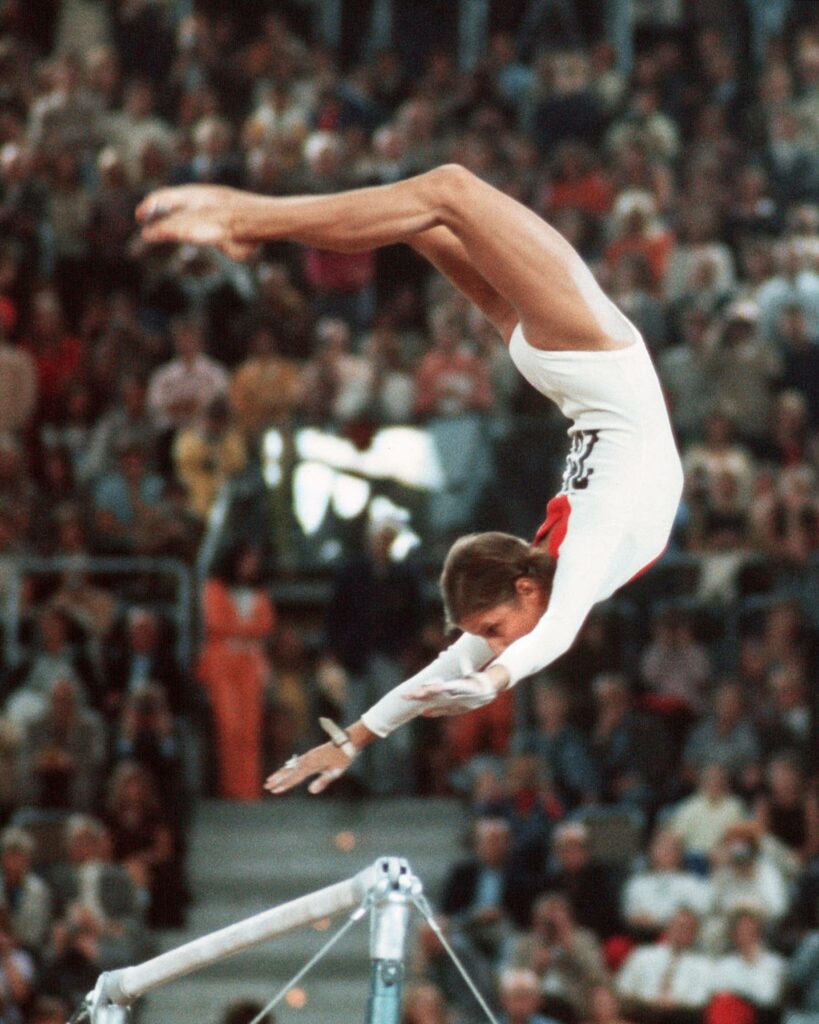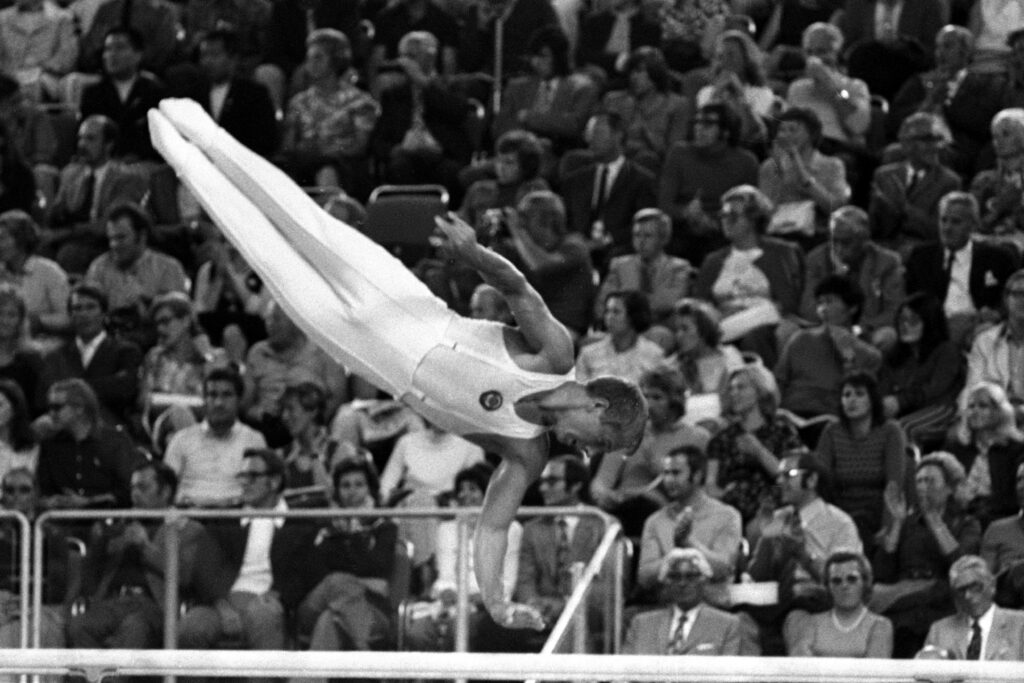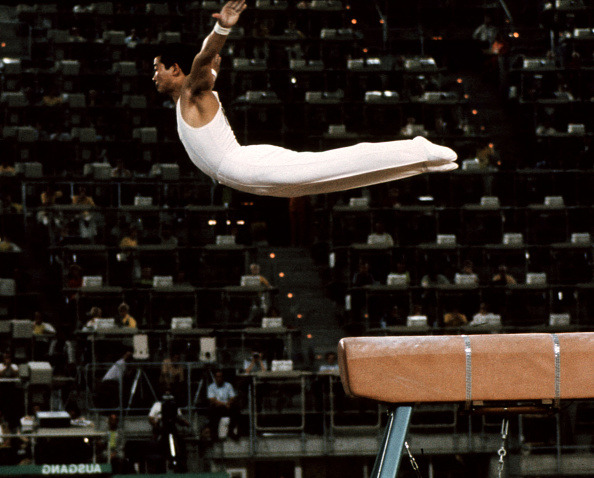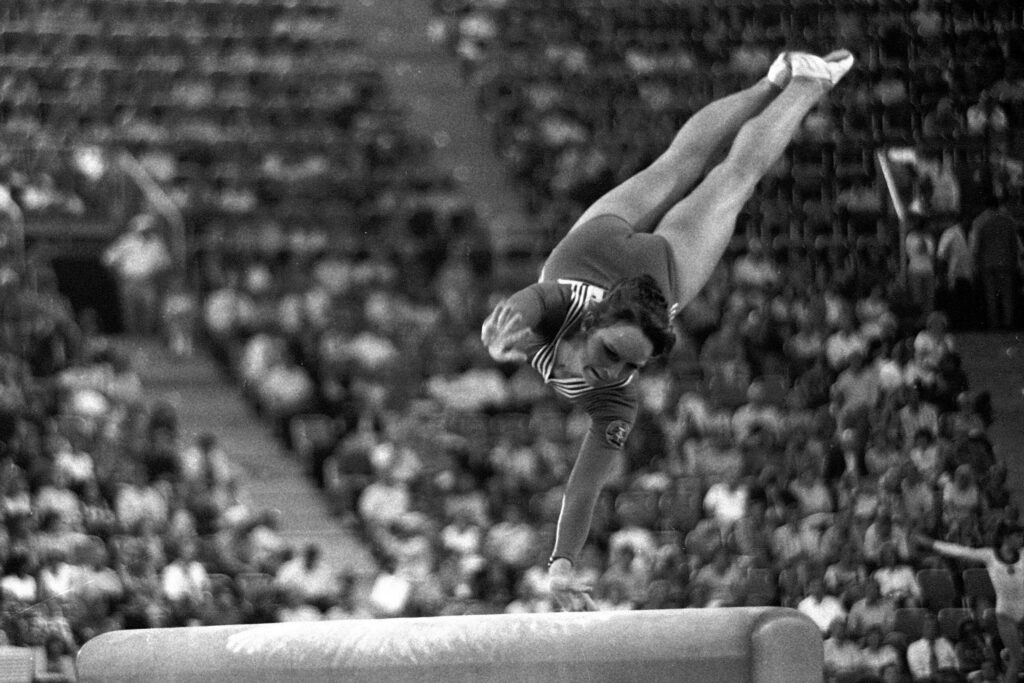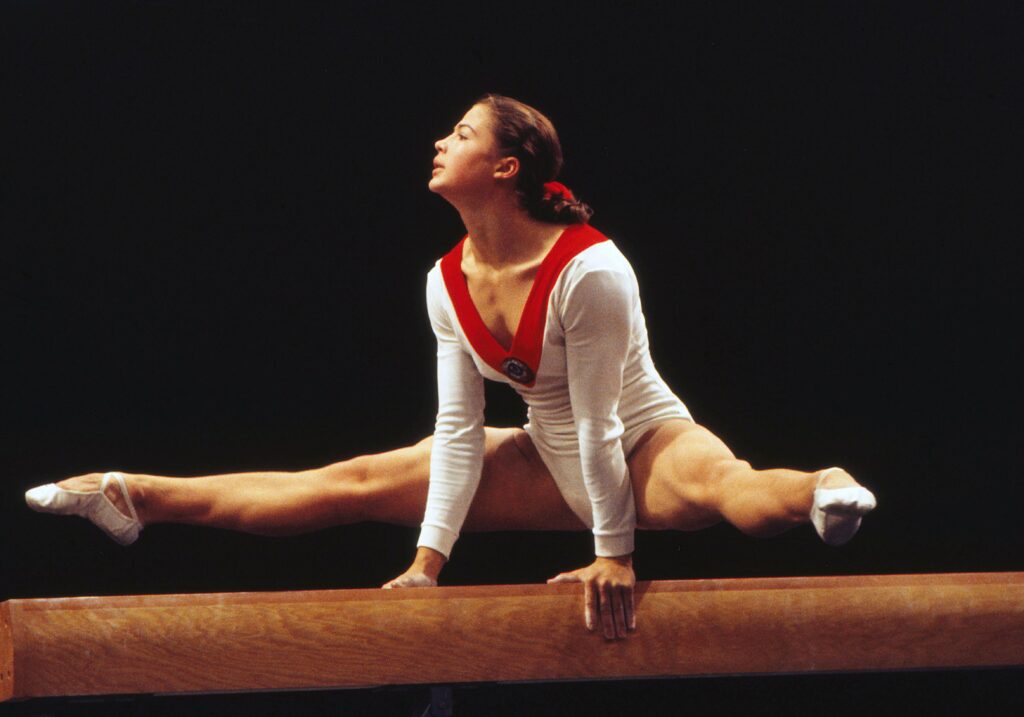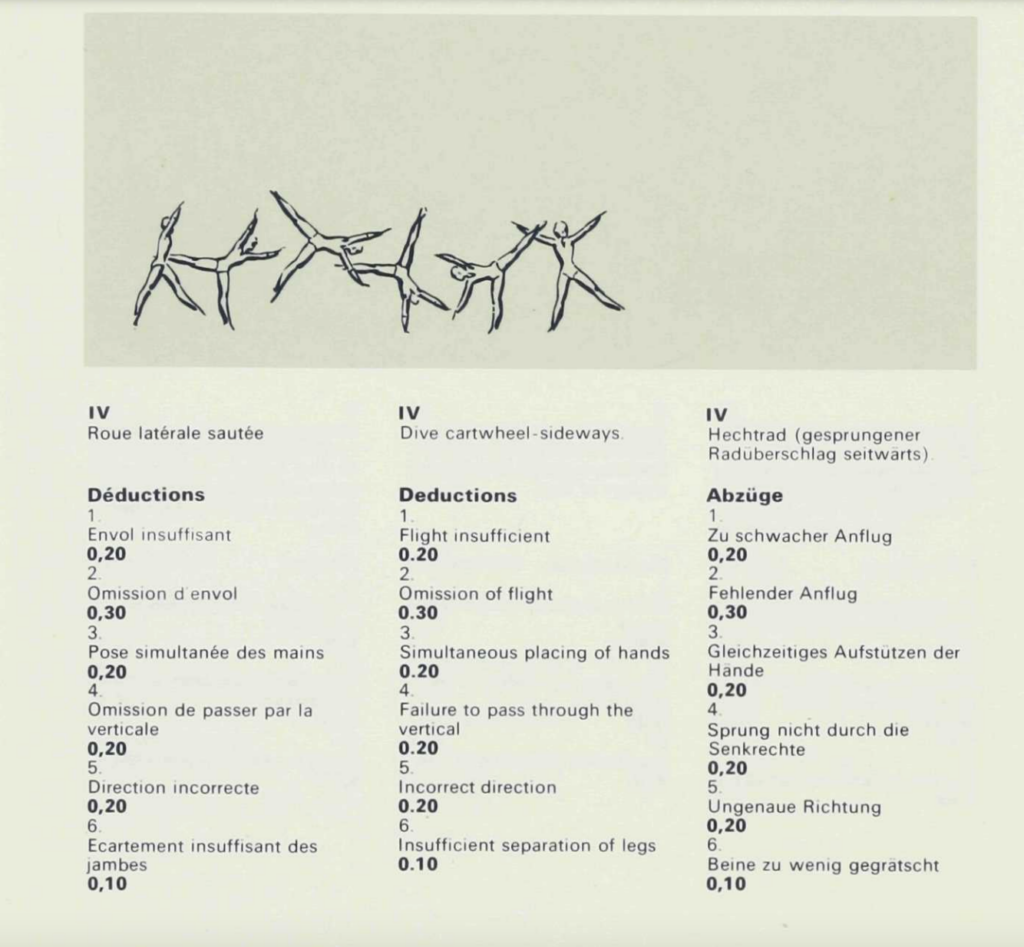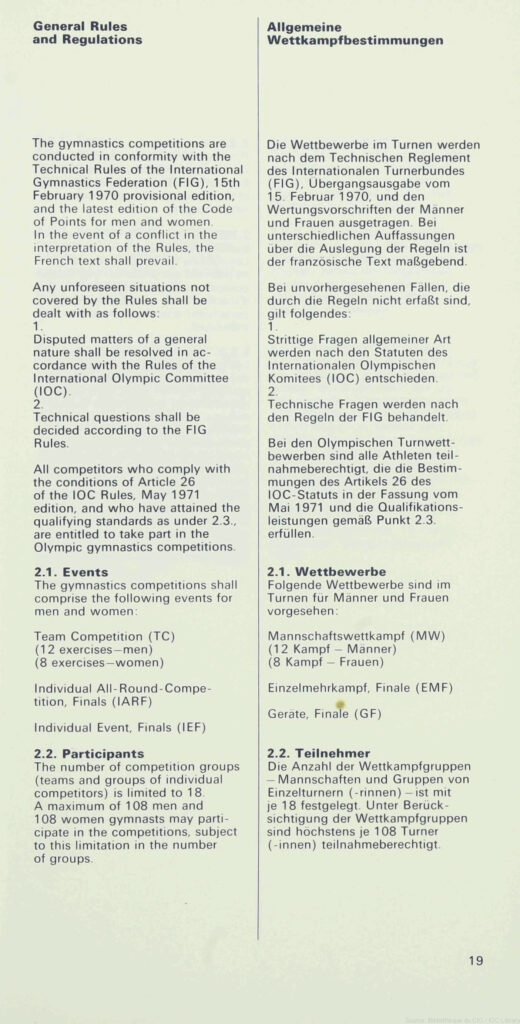On Tuesday, August 29, the men’s artistic gymnasts competed in the optionals portion of the competition. (You can read about the compulsories here.) Coming into the finals, Japan had a 2.85 lead over the Soviet Union, and reigning Olympic all-around champion Sawao Kato had a 0.05 lead over Nikolai Andrianov.
Tsukahara once again thrilled the audience with his originality. At the 1970 World Championships, it was his vault that captivated the audience. At the 1972 Olympics, it was his “moon salto” off high bar — an element for the Space Age.
Let’s take a look at what happened during the final day of the team competition.
